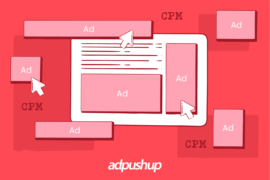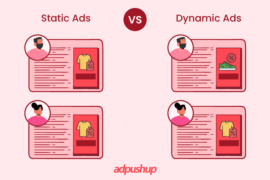We asked industry leaders from Bored Panda, VentureBeat, AdButler, Adzerk, and AdPushup to share their important yield metrics to measure growth. Here’s what they said.
The ultimate goal of every business is growth. However, the path you take to this growth can vary. For instance, we categorize digital advertising into the sell-side and buy-side. While the sell-side works on improving the ad revenue by keeping their users engaged, the buy-side works on their ROI by targeting the right audience.
But without an established plan to monitor ad campaign results, you can’t really prove if your ads are performing well. You must have a list of metrics that are checked regularly so you can adjust your set up as necessary.
So, how do you measure your day-to-day performance?
Ad revenue is the obvious answer. However, running a successful publishing business requires a thorough analysis of qualitative and quantitative results. And it can’t be done without tracking relevant metrics.
Now, these metrics can be different for businesses – even the ones working in the same niche. This is why we invited experts to share important yield metrics that they look at.
Here is what they think:
Justina Palinaviciute
Currently responsible for bamboo at Bored Panda offices in Vilnius, Justina uses her experience in data analysis, research, and yield management to make sure all publishers’ business ventures scale and grow bringing joy to users and shareholders.
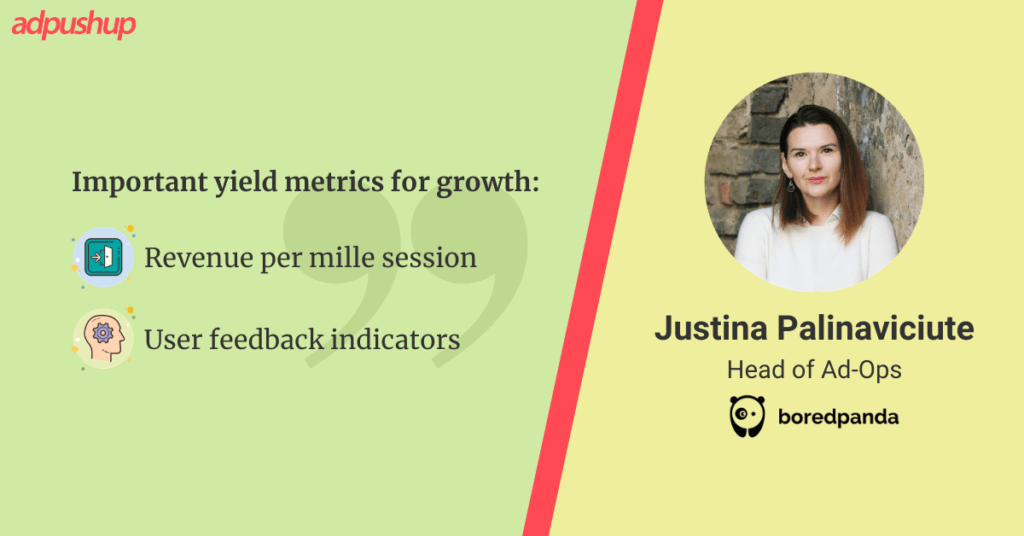
We try to diversify the business as much as possible, at all times we have projects that are new, in a field that is not yet known to us – setting expectations and tracking success is the most challenging.
It’s a matter of market research and perseverance when you decide if the project is not worth it. Letting go is the hardest part, it always helps to have new ideas lined up.
As for the well-established parts of the business – I stick to the universal metrics – revenue per mille session. It’s easily comparable from one project to another, one year to the other, and even between different revenue sources. I, personally, also pay a lot of attention to user experience and feedback. I would not feel successful if I won’t see the positive impact in the community we are trying to build and upkeep.
Ben Ilfeld
Ben likes to increase revenue for online publishers. Currently working at VentureBeat as Product Head, he is also the co-founder of AdGlue and founder of The Sacramento Press and SLOAN
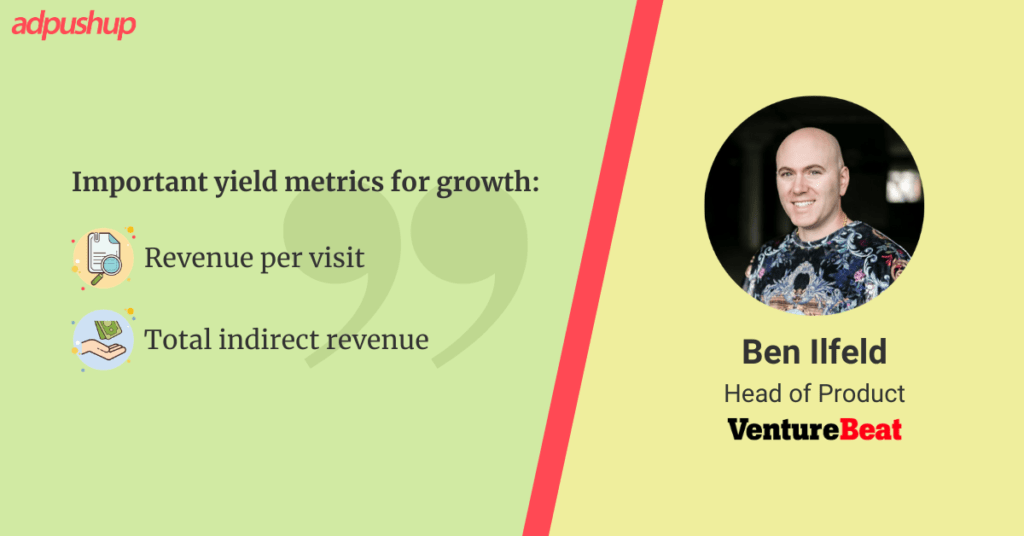
On the ad side, at VB we’re big fans of three metrics:
- Revenue per visit (RPV):
The metric is easy to understand, but only useful if you can roll up all your revenue and then segment along some key dimensions like: in-direct, device type, channel, demand source. Once you get it right, this is a powerful way to unify teams across departments. For example, you might be working with editorial and your UX team to increase pages per session and that contributes to higher revenue per visit.
- Total indirect revenue:
I know, this one should be very obvious. But let’s be honest with ourselves that if this number is low, it can be easy to hide it. Especially in our current environment, let’s take a minute to communicate this all the way up the chain. In April the market was in free-fall. Our team got out ahead with revisited total estimates which drove a new strategy. We diversified partnerships and lessened our reliance on display ads. As display stabilized this summer, we started to hit pre-COVID goals. But this would not have been possible without first looking at totals.
- Known active users:
Even 6 months ago, many would consider this part of the membership team’s domain. But 3rd party data’s future is uncertain and 1st party data is gaining so much momentum. Building up this metric is your investment in the future – and that future may be here sooner than you think.
Rajiv Khaneja
Rajiv Khaneja is a serial entrepreneur, investor, and Founder of AdButler, a leading AdTech Platform.
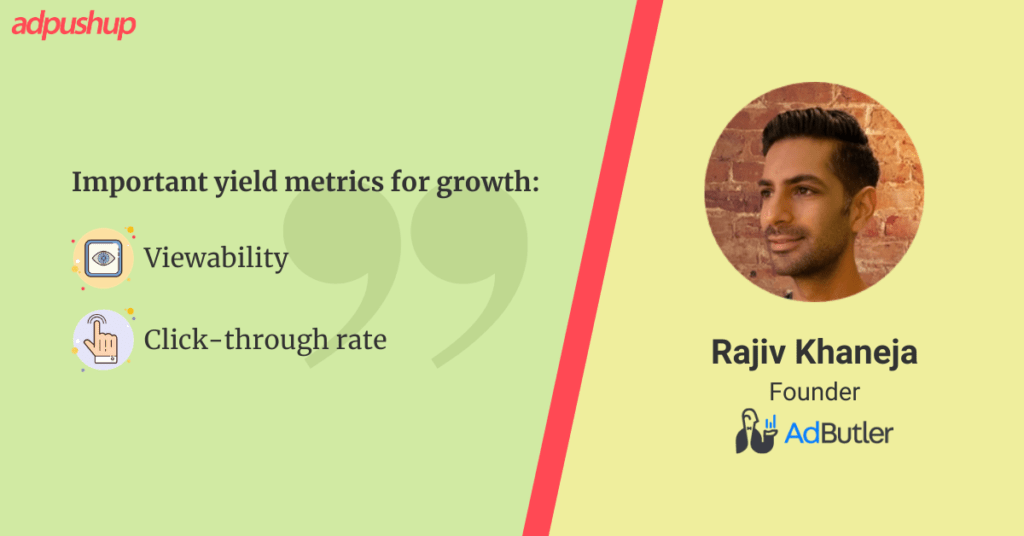
The most critical metrics for publishers are the ones that are used to optimize campaigns and deliver increased value to advertisers. We don’t look at a single set of metrics in an aggregated manner across a campaign. Instead, it’s best to look at metrics like viewability, click-through rate, and conversions in contextual categories.
This lets you see where an ad is performing well and where it’s performing poorly. You can do this by manually tagging pages or use sophisticated AI to read, understand and categorize pages where an ad is displayed and create contextual privacy-respecting audiences. Looking at metrics by the audience, algorithms can optimize campaigns across publisher properties and increase advertising performance – leading to higher revenue and repeat business.
Chris Shuptrine
Chris has worked in ad tech for over twelve years in a variety of roles – customer support, product management, and marketing – giving him perspectives from both the advertiser and publisher sides. He’s currently the VP of Marketing at Adzerk.

For Adzerk, the most important yield metric is growth of ad request decisions. As an infrastructure platform that is agnostic to CPMs, our revenue doesn’t change whether a company charges $1 or $100 CPMs, so we see success only when a company is increasing the number of ad request decisions they want us to make.
This doesn’t mean we are advocating our publishers load their sites/apps with more ads — it’s more around user growth, so that as they grow, we grow too. We want our customers to have predictable costs as they scale and know their Adzerk bill won’t double just because they decide to up the CPMs they charge their direct-sold advertisers.
This sets Adzerk apart from a lot of ad tech companies since we derive no money from ad revenue per se, but we expect that if publishers migrate more to direct-sold spend due to privacy laws, lack of third-party cookies, etc, that percentage revenue will become a more contentious pricing model. With programmatic, it’s easier to bake in fees to payouts, making margins more opaque, while that’s not really possible with direct-sold campaigns.
Dikshant Joshi
Dikshant has diverse experience in the ad tech space, from handling supply-side and demand-side relations, managing key accounts and partnerships, to working on strategic goals related to product development and sales.
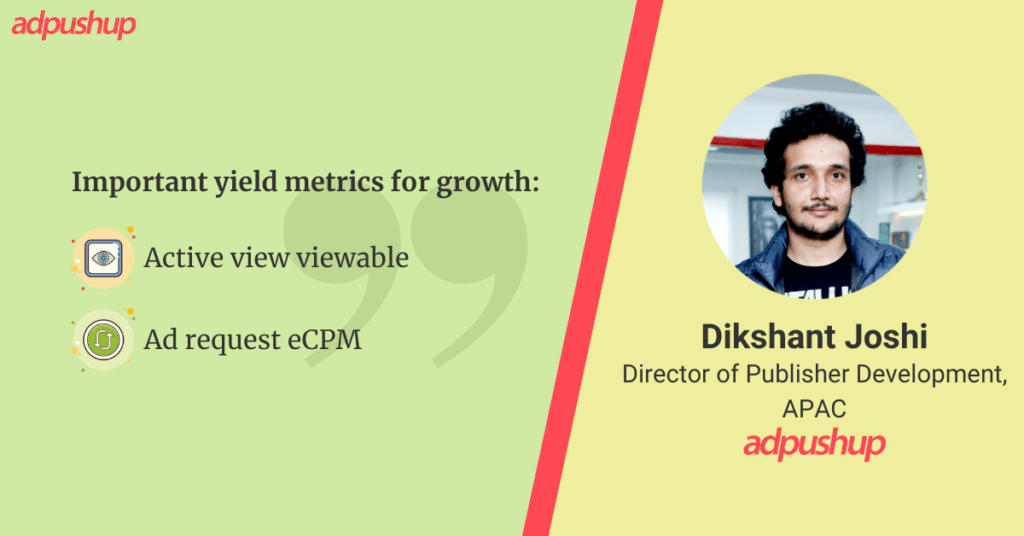
As publishers, we need to be in the shoes of the advertisers, agencies, brands, and campaign managers. Broadly the most popular types of advertising campaigns are conversion-based (click, install, lead, action, etc.) and branding based (active view metrics like active view viewable a.k.a. viewability, viewable time, etc.).
If a campaign of an advertiser is successful and they are seeing great results on your inventory they would want to buy more else they would want to reduce buying from your site. Hence, metrics like CTRs, Active View Viewable, Viewable time are extremely important.
At the same time, price floor optimization and refresh metrics (like Ad Request eCPM and Page/Session RPM) should be your north star. Meaning, while your ad impressions (or requests) increase by X%, the revenue might not increase at the same pace. In such cases, Page RPM should give you a better picture of your earning – no matter whether your Ad eCPM drops or increases.
In Closing
It is interesting to learn how we as an industry look at growth. While our paths might differ, our end goal remains the same – monetize by keeping users engaged and satisfied.
We have discussed quite a number of metrics above. However, it is recommended to focus on a lesser number of indicators. You might have noticed growth in one metric and decline in another – even when dealing with interdependent metrics. Hence, it is important to focus attention on what matters most for you and your business.
Let us know in the comment about your go-to metrics to measure success.
FAQs
A campaign’s effectiveness can be measured using marketing metrics, which are quantifiable ways to track performance. Marketing metrics vary greatly from campaign to campaign, but in general, they measure how your campaign affects audience behavior.
It involves tracking ad campaigns to determine whether the advertisements are performing as expected and whether media platforms are reaching the projected audience.
Your return on ad spend is a standard KPI for measuring the effectiveness of your digital advertising campaigns. ROAS is determined by three metrics: cost per click, conversion rate, and average order value. By analyzing this KPI, you can determine how effectively you’ve communicated your advertising messages.

Shubham is a digital marketer with rich experience working in the advertisement technology industry. He has vast experience in the programmatic industry, driving business strategy and scaling functions including but not limited to growth and marketing, Operations, process optimization, and Sales.



